While both copperheads and rattlesnakes are venomous and best avoided, you may be wondering what their differences are. If you have always wanted to compare a copperhead vs rattlesnake in order to learn more about them or even tell them apart, you’re in the right place.
In this article, we will address all of the ways in which the copperhead and rattlesnake are both similar and different. We will touch on where you can find these snakes in the wild, as well as how they may behave when threatened. After going over everything in this article, you should feel confident in your knowledge of these two vipers.
Let’s get started now!
Comparing Copperhead vs Rattlesnake
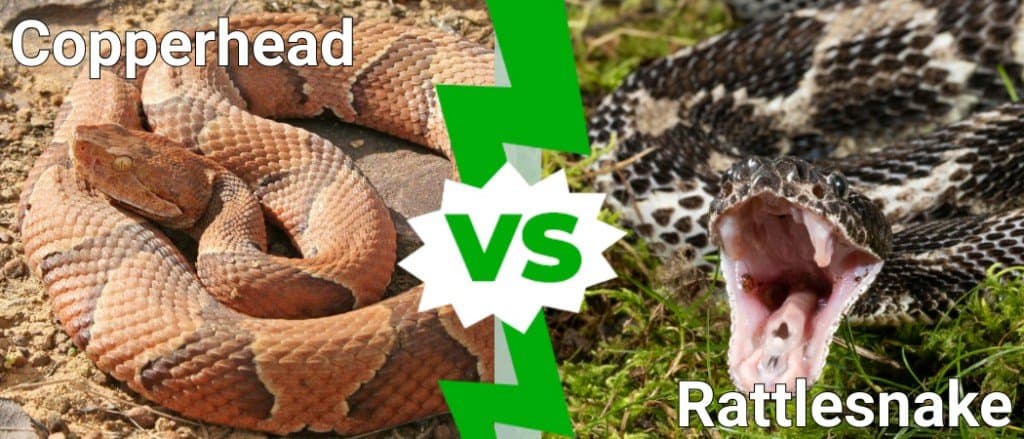
| Copperhead | Rattlesnake | |
| Size | 2-4 feet long | 1-8 feet long |
| Appearance | Lightly colored in shades of tan and blush; hourglass shaped pattern on their body which is always darker. Young copperheads have green tails | Coloring varies based on habitat; triangular head and vertical pupils; raised scales and diamond patterned body. Has a namesake rattle on the end of its tail |
| Location and Habitat | North and Central America; mountains, woods, populated areas | North, Central, and South America; mountains, deserts, grassy areas |
| Behavior | Avoids people and has far less potent venom compared to rattlesnakes; shakes its tail and freezes in place when threatened | Extremely potent bite for humans, but prefers to be left alone; rattles its tail to ward off predators. Changes the times of day it hunts based on the season |
| Diet | Insects, lizards, mice, voles, shrews, snakes, chipmunks, bats, and carrion | Rats, mice, lizards, rats, and frogs |
Key Differences Between Copperhead vs Rattlesnake

Copperheads grow to an average of 2-4 feet in length, while rattlesnakes grow anywhere from 1-8 feet in length.
©Jeff W. Jarrett/Shutterstock.com
There are many key differences between a copperhead vs rattlesnake. While both of these snakes are members of the pit viper family, copperheads grow smaller than rattlesnakes overall. The locations of rattlesnakes and copperheads differ, though these two can be found in the same environments. The appearance of a copperhead differs from a rattlesnake, primarily in the way that rattlesnakes have a rattle on the end of their tails, while copperheads do not.
However, there are even more differences to be explored. Let’s discuss these in more detail now.
Copperhead vs Rattlesnake: Size and Weight
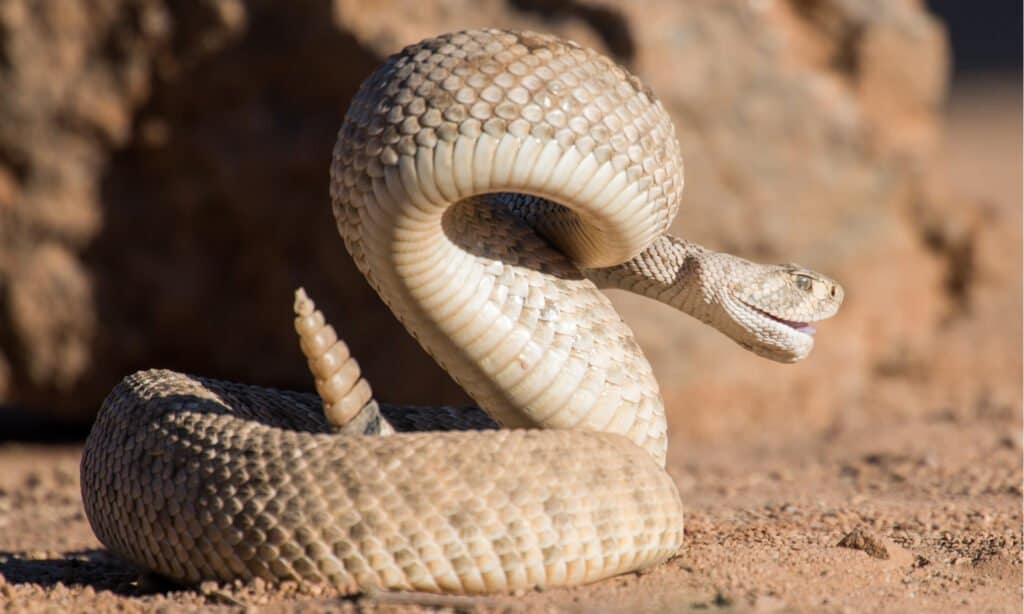
Copperheads are found in North and Central America, while rattlesnakes are found in North, Central, and South America.
©Susan M Snyder/Shutterstock.com
While you may not notice unless you compare these two snakes side by side, there are some key differences between a copperhead and a rattlesnake. Copperheads grow to an average of 2-4 feet in length, while rattlesnakes grow anywhere from 1-8 feet in length. This depends on the species of rattlesnake in particular, but rattlesnakes tend to outgrow copperheads as a whole.
Copperhead vs Rattlesnake: Location and Habitat Preferences
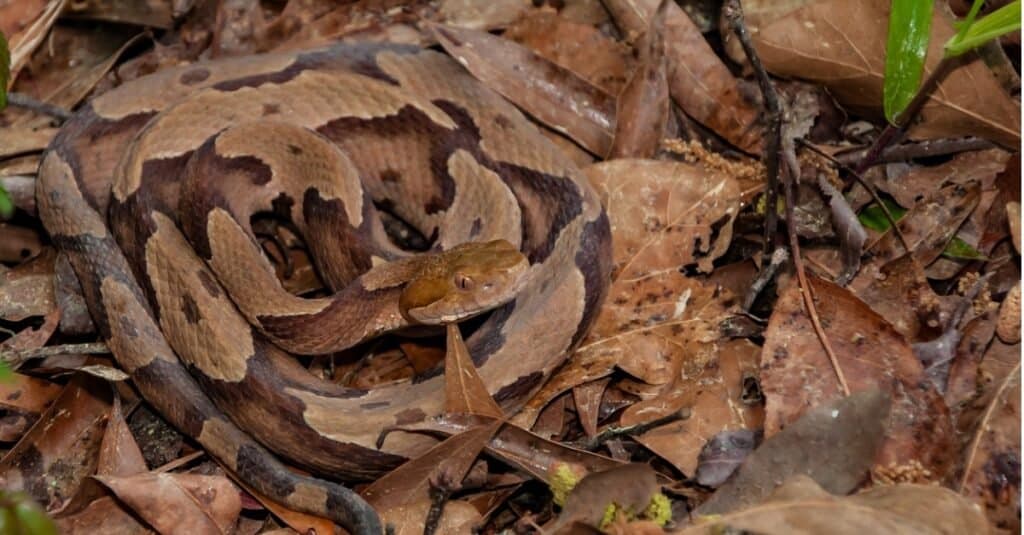
Copperheads are frequently found in mountainous regions such as the Appalachian Mountains, while rattlesnakes are commonly found in deserts.
©iStock.com/JasonOndreicka
While copperheads and rattlesnakes can exist in the same types of habitats, rattlesnakes live in more locations compared to copperheads. For example, copperheads are found in North and Central America, while rattlesnakes are found in North, Central, and South America. Both of these snakes enjoy a wide variety of habitats. Let’s talk about them in more detail now.
Copperheads are common in the eastern half of the U.S., and prefer wooded areas and habitats with a lot of leaf litter. Their patterns enable copperheads to camouflage almost completely among dry leaves on the ground.
Rattlesnakes are more flexible in their habitats. They frequent everything from deserts and rocky habitats to forests and open plains.
Copperhead vs Rattlesnake: Appearance

Even though copperheads mimic the rattle of a rattlesnake, they do not physically possess a rattle.
©Frode Jacobsen/Shutterstock.com
While it may take some time, you can easily tell the difference between a copperhead vs rattlesnake based on their appearances. The primary and most obvious difference between them is that a rattlesnake has a rattle at the end of its tail, while a copperhead doesn’t. Even though copperheads mimic the rattle of a rattlesnake, they do not physically possess a rattle.
Copperhead snakes are found in light red and tan colors, while rattlesnakes are found in shades of dark brown and tan. Rattlesnakes also have a diamond or muddled pattern on their bodies, while copperheads have an extremely unique hourglass pattern. However, both of these snakes come in similar shades depending on the environments in which they live, so keep their patterns and rattles in mind when trying to identify them in the wild!
Copperhead vs Rattlesnake: Behavior
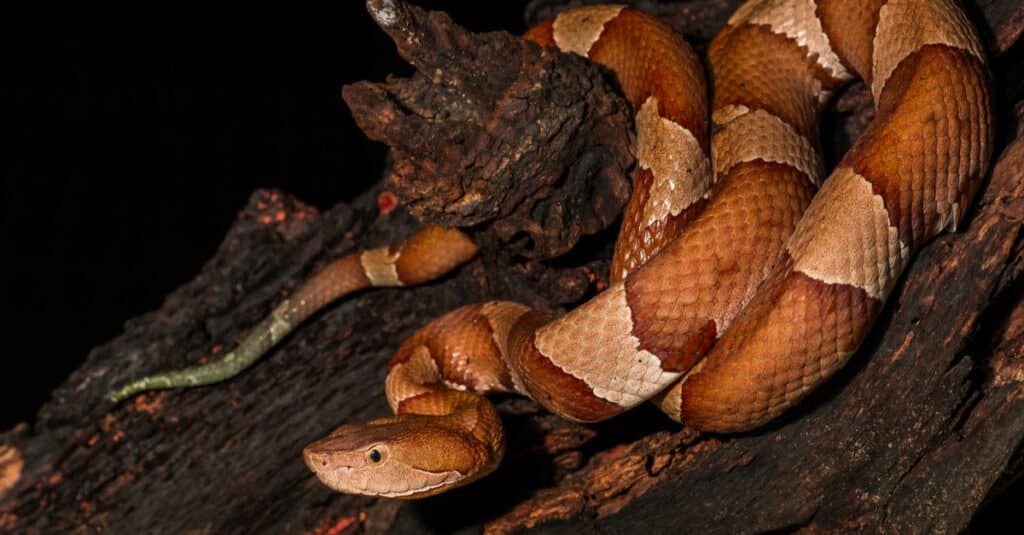
Rattlesnakes also have a diamond or muddled pattern on their bodies, while northern copperheads have an extremely unique hourglass pattern.
©Wildvet/Shutterstock.com
Both copperheads and rattlesnakes prefer to be left alone by humans, but there are some key differences in their behaviors when threatened. For example, copperhead venom is much less potent when compared to rattlesnake venom. Copperheads also tend to bite humans or larger predators without using any venom, while rattlesnakes rarely do this.
When cornered or threatened, a rattlesnake will coil up and rattle its signature rattle, while a copperhead will remain entirely still. Copperheads are one of the few snake species that chooses to remain frozen in place when it is threatened. However, copperheads will still coil and appear threatening, much like rattlesnakes.
Like many other snake species, copperheads choose to mimic the rattle of rattlesnakes when threatened, even if they don’t possess a rattle at all. In fact, young copperheads are easily identified by their green tipped tails, which they use to lure in prey as youths.
Copperhead vs Rattlesnake: Diet and Hunting Style
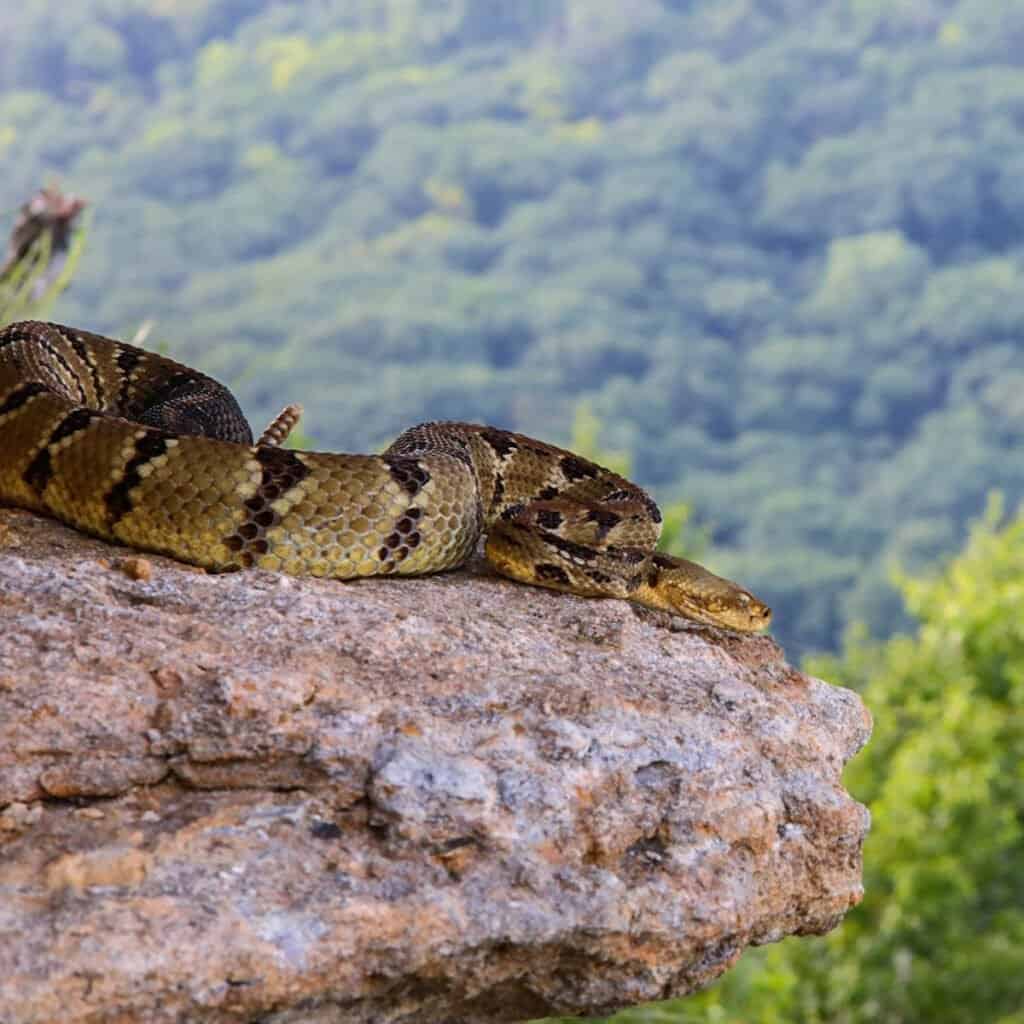
When cornered or threatened, a rattlesnake will coil up and rattle its signature rattle, while a copperhead will remain entirely still.
©bradenjalexander/Shutterstock.com
A final difference between a copperhead snake and a rattlesnake is found in their diet and hunting style. While both of these snakes are venomous carnivores, copperheads take down a wider variety of prey when compared to rattlesnakes. This is likely due to their differing environments and geographical locations.
For example, copperheads eat insects, lizards, mice, voles, shrews, snakes, chipmunks, bats, and carrion, while rattlesnakes eat rats, mice, lizards, rats, and frogs. However, their diets often overlap, especially if a rattlesnake and a copperhead live in a similar ecosystem.
What is the Difference Between a Copperhead and a Watersnake?

Watersnakes have rows of teeth rather than fangs.
©Jay Ondreicka/Shutterstock.com
Eastern water snakes feature a bulb-shaped pattern, while copperheads exhibit an hourglass-shaped pattern. These snakes are typically found in deciduous forests, mixed woodlands, rocky outcroppings, and low-lying swamp regions. Unlike some snakes, they lack fangs and instead possess rows of teeth.
The primary distinction between an eastern water snake and a copperhead lies in their venomous nature. Copperheads are venomous snakes with the physical traits of pit vipers, featuring hourglass-shaped crossbands on their pattern.
In contrast, eastern water snakes are nonvenomous and display bulb-shaped crossbands.
Discover the "Monster" Snake 5X Bigger than an Anaconda
Every day A-Z Animals sends out some of the most incredible facts in the world from our free newsletter. Want to discover the 10 most beautiful snakes in the world, a "snake island" where you're never more than 3 feet from danger, or a "monster" snake 5X larger than an anaconda? Then sign up right now and you'll start receiving our daily newsletter absolutely free.
Thank you for reading! Have some feedback for us? Contact the AZ Animals editorial team.








